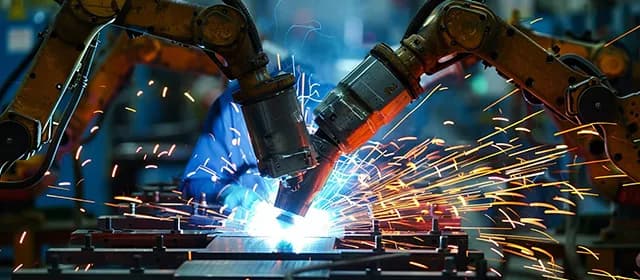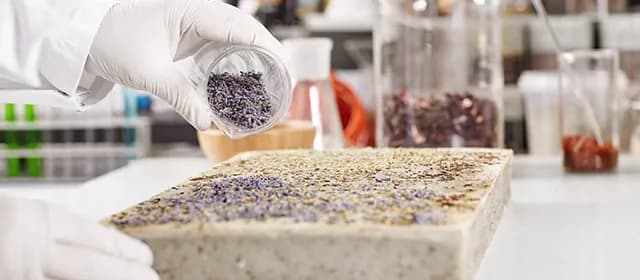Industrial manufacturing is undergoing a transformative shift. In sectors such as semiconductor fabrication, clean energy production, aerospace, and advanced research, precision and purity are non-negotiable requirements. These industries rely on ultra-high vacuum systems to deliver consistent quality and maintain operational efficiency.
Non-evaporable getters (NEG) pumps are increasingly recognized as a strategic tool for meeting these demands. They offer a reliable, contamination-free vacuum solution that reduces maintenance costs and enhances productivity. Their compact design and high efficiency make them an attractive choice for industrial leaders aiming to improve process stability and long-term competitiveness.
According to Kings Research, the global non-evaporable getters (NEG) pumps market is set to grow at a compound annual growth rate (CAGR) of 4.43% from 2023 to 2030. The importance of NEG pumps is growing alongside technological advancements and global investments in advanced manufacturing. As processes become more precise and contamination-sensitive, vacuum technologies like NEG pumps are no longer optional; they are a strategic necessity.
Why Are NEG Pumps Essential for Semiconductor Manufacturing?
The semiconductor industry is a prime example of why NEG pumps are becoming indispensable. As fabrication advances toward smaller nodes and higher chip densities, maintaining ultra-high vacuum conditions is critical for wafer fabrication and coating processes. Even minute contamination can lead to defects, lower yields, and costly downtime.
This necessity is reflected in government policy and industry investment. The CHIPS and Science Act of 2022 allocated nearly USD 53 billion to strengthen U.S. semiconductor manufacturing, aiming to expand domestic capacity and technological leadership (Source: https://trade.gov/). This large-scale investment is driving significant expansion of fabrication facilities.
Similarly, Asia-Pacific nations such as South Korea, Taiwan, Japan, Malaysia, and Singapore are heavily investing in semiconductor manufacturing capabilities. For instance, Intel has committed USD 88 billion over the next decade to expand manufacturing facilities in Europe (Source: https://www.business-reporter.co.uk/). These expansions are creating a direct need for reliable vacuum systems.
NEG pumps are essential in this context. Their ability to maintain contaminant-free ultra-high vacuum conditions with minimal maintenance makes them a natural fit for high-volume, high-precision fabrication environments. Industrial decision-makers increasingly recognize that integrating NEG pump systems is not just a technical requirement; it’s a strategic investment in process reliability and competitiveness.
Where Are NEG Pumps Used in Clean Energy Technologies?
NEG pumps are not limited to semiconductor fabrication; they are also critical to clean energy manufacturing. Clean energy sectors such as solar cell production, hydrogen fuel cells, and advanced battery manufacturing rely heavily on ultra-high vacuum conditions for efficiency and quality.
For example, solar photovoltaic modules require vacuum deposition processes for coating wafers with thin films. Maintaining contaminant-free vacuum conditions is essential to ensure efficiency and longevity. NEG pumps are well-suited to these conditions, offering consistent performance without frequent maintenance interruptions.
The U.S. Department of Energy’s Clean Energy Manufacturing Initiative explicitly highlights the role of advanced manufacturing in producing solar photovoltaic modules, wind turbines, and energy storage systems. Meanwhile, the California Energy Commission has emphasized that emerging battery manufacturing technologies demand reliable ultra-high vacuum systems to ensure product integrity.
For industrialists, the implication is clear: NEG pumps are a strategic asset in renewable energy production. Their ability to deliver stable, high-purity vacuum conditions directly supports innovation and scalability in clean energy manufacturing.
How Do NEG Pumps Benefit Industrial Applications?
NEG pumps bring tangible benefits across multiple industrial sectors. Their ability to maintain ultra-high vacuum conditions without moving parts translates to lower contamination risk, longer operational life, and reduced downtime. For industries operating at scale, these benefits add up to significant productivity gains and cost savings.
One of the core advantages is operational efficiency. NEG pumps consume less energy compared to conventional systems when sustaining ultra-high vacuum conditions, and their compact size allows easier integration into existing manufacturing lines. This means fewer disruptions and greater flexibility for process design.
From a financial perspective, NEG pumps represent a strategic investment. They lower the total cost of ownership by reducing maintenance cycles and minimizing downtime. For decision-makers, adopting NEG pump technology is not just a matter of process optimization; it is a long-term strategic choice that safeguards quality and efficiency.
Key Stakeholders in NEG Pump Adoption
The adoption of NEG pump technology spans multiple sectors and stakeholders. Semiconductor fabricators, clean energy manufacturers, aerospace companies, and scientific research facilities all have a vested interest in ultra-high vacuum solutions. For them, NEG pumps are not just equipment; they are a critical part of the production infrastructure.
Policy makers and regulatory agencies also influence NEG pump adoption. Government initiatives and funding programs, such as those supporting semiconductor and clean energy manufacturing, create conditions that accelerate adoption. Industrialists who stay informed about these developments can leverage them to strengthen their competitive position.
Aerospace and research institutions are further stakeholders. These sectors often require ultra-high vacuum environments for testing and fabrication of specialized components, making NEG pumps a logical choice due to their reliability and minimal maintenance.
Current Challenges and Opportunities in NEG Pump Technology
NEG pump technology is mature, but it faces challenges. Activation requirements, where getter materials must be heated to function, can be complex to integrate into some manufacturing setups. Additionally, getter materials have a finite capacity and must eventually be reactivated or replaced, requiring careful process planning.
However, opportunities are expanding. The growing emphasis on automation and smart manufacturing means NEG pumps can be integrated into intelligent vacuum systems that allow real-time performance monitoring. Emerging research in getter materials also promises to improve gas absorption capacity and reduce activation temperatures.
Government funding for semiconductor and clean energy projects presents another opportunity. These investments are fueling the adoption of advanced vacuum systems, offering manufacturers a chance to innovate and optimize their processes with NEG pump technology.
For industrial leaders, understanding these challenges and opportunities is essential to making informed investment decisions that align with long-term operational goals.
How Is NEG Pump Technology Changing?
NEG pump technology is evolving with advances in materials science and automation. Research is focused on getter materials with more capacity, lower activation temperature, and less contamination. This will open up more applications for NEG pumps and increase reliability.
Integration with smart manufacturing systems is another trend. IoT-enabled NEG pumps with real-time monitoring and predictive maintenance are becoming a reality, in line with Industry 4.0. This will improve process control, reduce downtime, and increase operational efficiency.
The push for sustainability is also driving NEG pump innovation. Manufacturers are developing pumps that use less energy, last longer, and have a smaller environmental impact. For industrialists, keeping up with these innovations is key to staying competitive and efficient.
What’s Next for NEG Pumps in Industrial Manufacturing?
The future for NEG pump adoption looks good. Semiconductor manufacturing and clean energy will be the main drivers of demand, driven by investment and policy. New applications in aerospace, medical manufacturing, and research will add to the need for ultra-high vacuum solutions.
Sustainability will also play a big role. NEG pumps are green by nature, offering energy-efficient vacuum solutions that require minimal maintenance. As industries go green, the role of NEG pumps will become more critical.
For industrial leaders, adopting NEG pump technology early will be a key differentiator. Those who integrate these systems first will gain a competitive advantage through quality, efficiency, and resilience.
Summing it Up
NEG pumps are more than vacuum technology; they are a strategic asset for industrial manufacturing. With investment in semiconductor fabrication and renewable energy, they are a reliable and cost-effective solution for ultra-high vacuum. For industrialists, they are a technical necessity and a long-term investment in process excellence.
The future of manufacturing will be about precision, reliability, and sustainability. NEG pumps deliver on all three, so they should be a part of any industrial strategy for growth and competitiveness.

 Pumps.webp)


